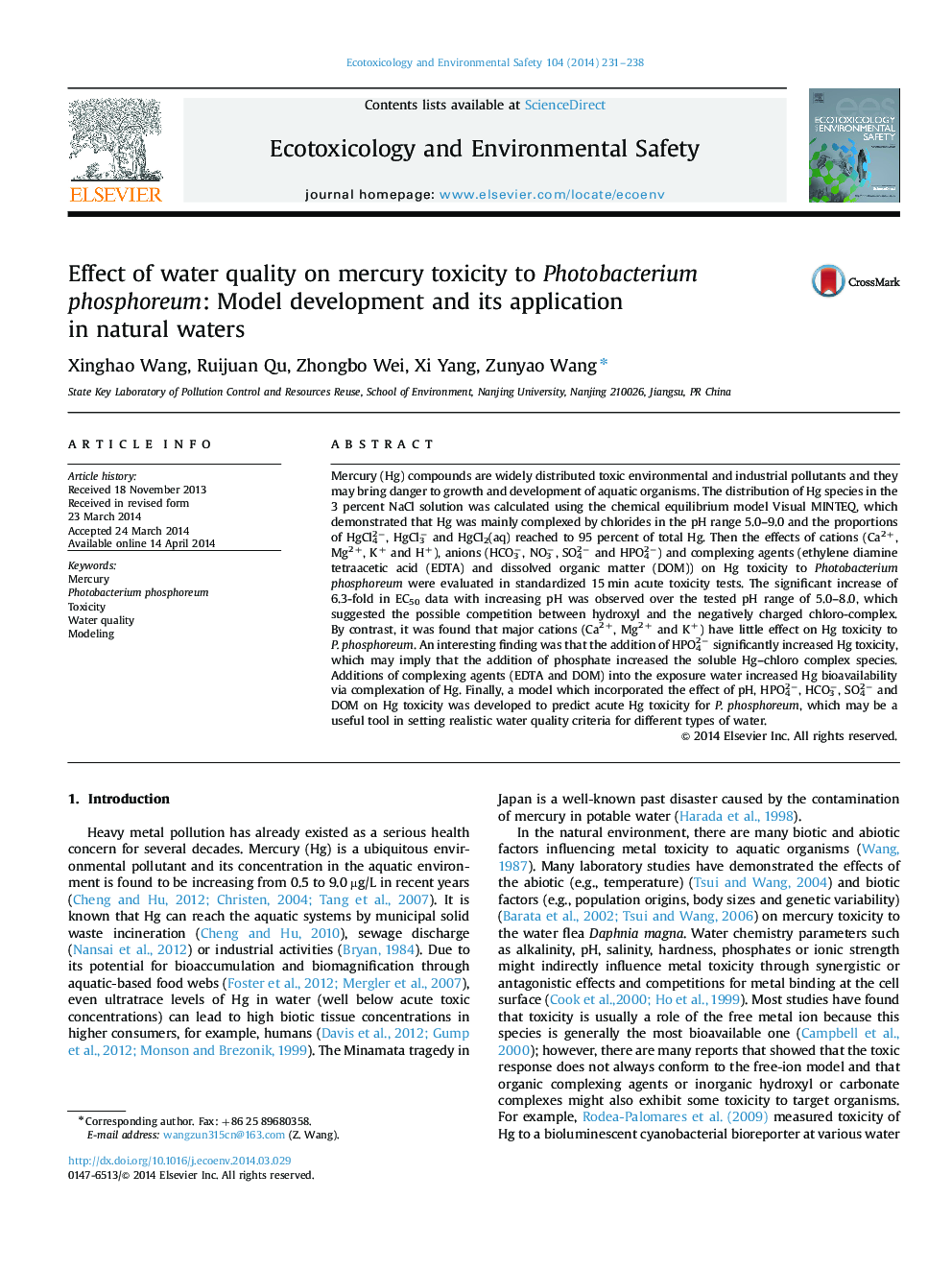| Article ID | Journal | Published Year | Pages | File Type |
|---|---|---|---|---|
| 4420138 | Ecotoxicology and Environmental Safety | 2014 | 8 Pages |
•Effects of cations, anions and DOMs on Hg toxicity to Photobacterium phosphoreum were evaluated.•The addition of HPO42− increased Hg toxicity.•The enhancement of Hg toxicity was caused by the addition of DOM.•The developed model is also applicable to natural field waters.
Mercury (Hg) compounds are widely distributed toxic environmental and industrial pollutants and they may bring danger to growth and development of aquatic organisms. The distribution of Hg species in the 3 percent NaCl solution was calculated using the chemical equilibrium model Visual MINTEQ, which demonstrated that Hg was mainly complexed by chlorides in the pH range 5.0–9.0 and the proportions of HgCl42−, HgCl3− and HgCl2(aq) reached to 95 percent of total Hg. Then the effects of cations (Ca2+, Mg2+, K+ and H+), anions (HCO3−, NO3−, SO42− and HPO42−) and complexing agents (ethylene diamine tetraacetic acid (EDTA) and dissolved organic matter (DOM)) on Hg toxicity to Photobacterium phosphoreum were evaluated in standardized 15 min acute toxicity tests. The significant increase of 6.3-fold in EC50 data with increasing pH was observed over the tested pH range of 5.0–8.0, which suggested the possible competition between hydroxyl and the negatively charged chloro-complex. By contrast, it was found that major cations (Ca2+, Mg2+ and K+) have little effect on Hg toxicity to P. phosphoreum. An interesting finding was that the addition of HPO42− significantly increased Hg toxicity, which may imply that the addition of phosphate increased the soluble Hg–chloro complex species. Additions of complexing agents (EDTA and DOM) into the exposure water increased Hg bioavailability via complexation of Hg. Finally, a model which incorporated the effect of pH, HPO42−, HCO3−, SO42− and DOM on Hg toxicity was developed to predict acute Hg toxicity for P. phosphoreum, which may be a useful tool in setting realistic water quality criteria for different types of water.
